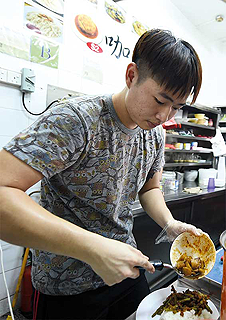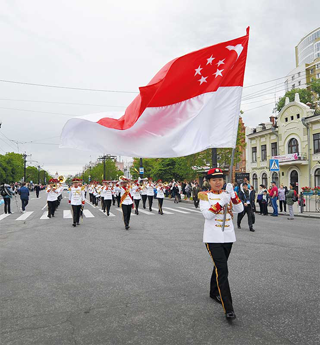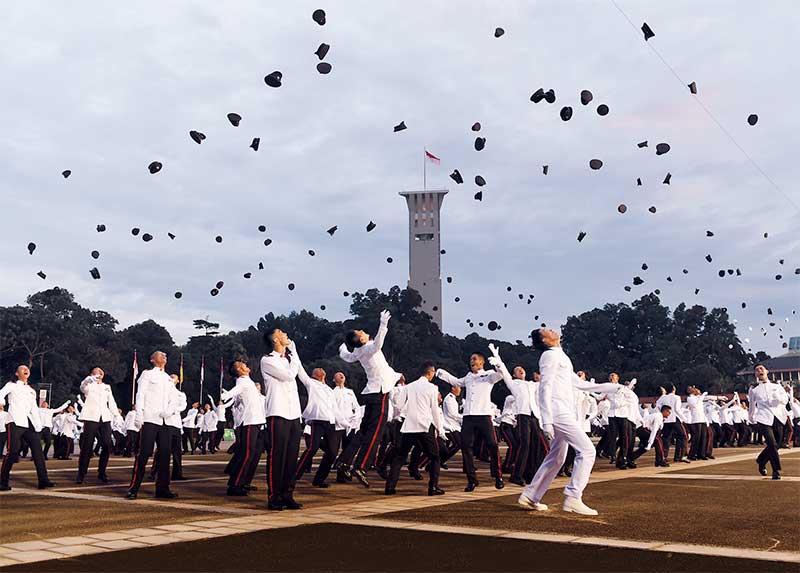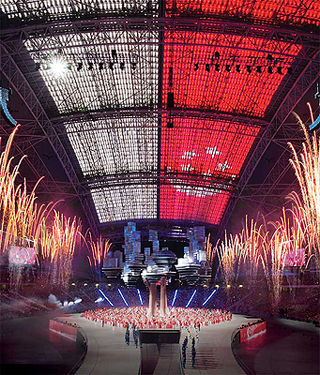Speaking at the very first SLD held on 31 May 2002, the late Mr Lee Kuan Yew pointed out the two most important security challenges that the region would face in years to come: the United States (US)-China relationship and global terrorism.
Today, these concerns remain at the forefront, but the scale of the challenges and the players involved have evolved.
"(They) continue to take centre stage in the world," said Dr Ng. "Some main characters may have changed, but the main plot remains, albeit with different nuances and new complexities played out."
Dr Ng was delivering his speech, titled "Regional Security Challenges 15 Years On - Same Plot, Different Cast", on the closing day of this year's SLD which was held from 3 to 5 Jun.
On the pre-eminent power of the US and the rise of China in the context of the South China Sea territorial disputes, Dr Ng recognised the contributions of both countries to the region. Nonetheless, he acknowledged that the South China Sea and territorial disputes had deeper implications than purely a contest for territories.
Army enhancements
A battalion-sized force, the ADF comprises highly-trained soldiers with the ability to respond to terror threats in urban settings. Inaugurated on 12 Jul, this unit will work alongside the Special Operations Task Force (SOTF), Island Defence Task Force (IDTF) and the Home Team agencies.
Other areas in which the ADF can be deployed include civil contingencies, regional Humanitarian Assistance and Disaster Relief (HADR) missions and Peace Support Operations.
To adapt to new threats, the SAF will also be upgrading its capabilities. The ULTRA M113 Armoured Fighting Vehicle (AFV), which has been in service since the early 70s, will be replaced.
Developed by the Defence Science & Technology Agency (DSTA) and local defence industry, the next generation AFV will be equipped with systems not found in its predecessor, such as a laser rangefinder and automated firing control systems. It will provide the SAF's armoured forces with enhanced firepower, protection, mobility and situational awareness.
The Army will also see the addition of the Protected Combat Support Vehicle (PCSV) -- announced at the Committee of Supply debate earlier this year -- to provide improved firepower, better protection and greater situational awareness for motorised infantry combat support and combat service support forces.
The PCSV and AFV will be rolled out by 2017 and 2019 respectively.
Navy additions
Noting the good progress of the Republic of Singapore Navy's (RSN's) Littoral Mission Vessel (LMV) programme, Dr Ng revealed that a third LMV, Unity, would be launched later this year. All eight vessels will be fully operational by 2020.
Other future additions he highlighted included two new Type 218SG submarines and a replacement for the Landing Ships Tank.
The latter's successor will be a Joint Multi-Mission Ship of a larger scale that has greater carrying capacity for helicopters. This capability is especially useful in HADR missions.
In line with the move towards greater automation, the RSN is also planning for a fully unmanned fleet to replace its Mine Counter-Measure Vessels.
Air Force upgrades
In addition to the previously announced replacement and upgrade for the Super Puma and Chinook helicopters, Dr Ng commented on the Republic of Singapore Air Force's (RSAF's) plans for its air bases. "To replace (Paya Lebar Air Base), we are expanding Changi Air Base as well as Tengah Air Base. But beyond expansion, it gives us a very good opportunity to build a modern air base from scratch -- a smart air base," he said.
Greater automation and unmanned systems could be used in areas such as security and in the launch and recovery of aircraft.
Other RSAF plans include the setting up of the Enhanced Island Air Defence System to provide a comprehensive shield that protects Singapore against airborne threats.
Tighter cyber-security
To coordinate counter-terrorism efforts, a National Security Centre will be set up by DSTA, said Dr Ng. Using data analytics and Command and Control systems, this centre will help to integrate responses by the Ministry of Defence (MINDEF) and Ministry of Home Affairs (MHA) so that the SAF and Home Team can work more closely to combat terrorism.
In addition, MINDEF will have a Cyber Security Operations Centre 2.0, containing advanced content scanning engines, data analytics and security assessment tools. This will allow the Centre to investigate and recover from possible cyber attacks.
Dr Ng also announced the launch of the MINDEF Defence Science Scholarship to attract the best minds in science and engineering to lead the defence science organisations.
Always doing more
With the signing of the Australia-Singapore Comprehensive Strategic Partnership in May, the SAF will be able to tap the vast Australian land space -- 10 times the size of Singapore for training over 25 years, said Dr Ng.
Training plans in Australia include a combined arms live-firing range for the artillery, the armoured infantry and the RSAF's Apache helicopters, as well as an urban live-firing area much bigger than the Murai Urban Live-Firing Facility in Singapore.
Dr Ng also noted that good progress had been made in strengthening National Service (NS) through the recommendations by the Committee to Strengthen NS. Of the 30 recommendations, 24 will be implemented by August.
He announced two of the key initiatives to be implemented: NS Vocation Matching and the NS Mark. Vocation matching will allow pre-enlistees to indicate their interest in NS vocations and give them a greater sense of ownership.
Dr Ng noted that "there will be two tiers of NS Mark -- NS Mark and NS Mark (Gold), so that we can support (more) employers even as they support the SAF".
While noting that the SAF had done well in the last 50 years, Dr Ng emphasised the continued need to be prepared and adapt to new challenges: "We (must continue to) invest in resources (and) call upon Singaporeans to do their NS duties so that the SAF can protect Singaporeans and defend our nation."
Training for terror ops
In the event of a terrorist attack, the SAF has to work seamlessly with Home Team agencies. It will be deployed in three areas -- the inner ring, cordon and confidence patrols.
While the SOTF will form the inner ring to take on the terrorists, the ADF will form a cordon around the affected area, setting up checkpoints and identifying entry and exit points.
A day or two after the attacks, Full-time National Servicemen (NSFs) and Operationally Ready National Servicemen (NSmen) will be activated to conduct patrols across Singapore to maintain homeland security and restore public confidence.
Chief of Army Major-General (MG) Melvyn Ong announced this in an interview on 29 Jun.
To prepare servicemen for such scenarios, the SAF will be setting up the Island Defence Training Institute, a centre that will provide peacetime contingency training for NSFs and NSmen.
"The average NSF of today has been trained in urban operations, so we are building on that by adding on skills such as Civil Military Relations skills, an emphasis on the rules of engagement, judgmental live-firing and public order control," said MG Ong.
He also unveiled plans to integrate the training areas in the west, which include building a training facility to simulate urban and counter-terrorism scenarios.
"We want to build a battle circuit where our soldiers can do training for tactical issues. We want to improve training realism of the whole plot (of land) with battlefield effects and the way we provide feedback to NSFs and NSmen who train there," explained MG Ong.
The Army is also looking into leveraging simulation training, where a small force can test their tactics and manoeuvres against a larger enemy force in simulated battles.





